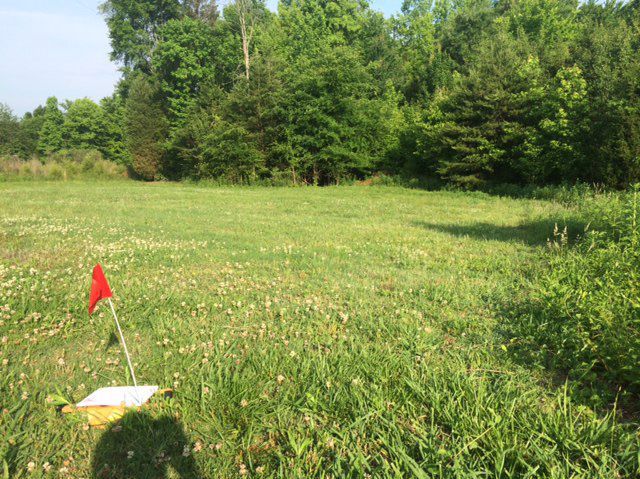Before you plant an orchard, you have to plan an orchard
Published 12:00 am Friday, May 30, 2014
SALISBURY — As most of you know, I am very fascinated with tree fruits and I am very excited to announce that our office will soon have a small fruit orchard.
This summer the Cooperative Extension office was blessed with three summer interns, and although I have to share with the rest of the office, I am thankful to have them helping me with planning the orchard. Here is what they will be doing. Hopefully it will help you decide if you want an orchard of your own.
First, you should do some research on the fruits that do the best for your area. You need to know spacing, pollination requirements, varieties and cultivars that do the best in our area; disease and pest issues; whether they need trellising and their soil requirements.
Once you have a good idea of what you want to grow, you need to select a sunny location that receives at least six to eight hours of sunlight. You would also prefer to select a location that is not sloped or at a lower elevation since some fruits are not as cold hardy. Sites close to the tree/forest line can also be potential frost pockets. Once the site is selected, you need to map out your site per the fruits you want to plant.
For our office, we are going with fruits that are right for our area, such as dwarf apple trees, peaches, paw paws, blueberries, blackberries and grapes. Some of these fruits will require similar soil pH levels, some need cross pollination, some are more cold sensitive, and some may need trellising.
Since many fruits have these requirements, it is necessary to have a plan for all of the fruits. Because the fruits can require different needs, you will need to take a soil sample, for us this is especially true since blueberries prefer a more acidic pH.
Once the soil sample is taken, be sure to make the necessary amendments before planting. This is probably the most important step of all because if you do not use your soil sample report properly and make the amendments, you could be spending a lifetime trying to fix the damage that could have been prevented.
Once the amendments are made, you will take your orchard plan and start placing the fruit in the correct locations. It is good to keep this plan on a computer, USB flash drive, or notebook that you can return to later. The plan can help you remember spacing, sunlight and soil requirements. It is also a great place to keep your varieties labeled for future reference.
If you are planting blackberries or grapes, trellising may be required and often times it is easier to build the trellis before planting. You may also prefer to use irrigation and, depending on the crop, you may want the irrigation in place before planting, as well. Once you have your orchard planned correctly, amended soil, irrigation planned/put in, and trellis built, then you can plant. Most commercial orchards prefer fall or late winter to begin planting.
After planting, it is time for maintenance and improvements. Orchard spraying will be necessary if one wishes to have a fruit crop. Of course, when you apply a pesticide it is always important to apply the pesticide in the afternoon to reduce the impact on the honeybee population.
There are some organic approved pesticides that one can use for their orchards, but be sure to contact your local Cooperative Extension agent for the most effective products.
Pruning is an every year task and most heavy pruning is done in the late winter when the trees and plants are dormant. Fruit thinning may also be required, depending on what you grow (apples and peaches will need thinning).
Fertilization can be determined by routine soil sampling. The North Carolina Department of Agriculture keeps soil reports for two years on their online database so it is wise to take a sample at least every other year or every two years.
Irrigation is a wonderful thing, it is most important within the first year to get the plants and trees established. For homeowners it is not always necessary to have an irrigation system but if you wish to have a good consistent crop, it is highly recommended. Other maintenance tasks will be in the form of scouting for pests, diseases and repairs that are needed on the trellis systems.
Having an orchard can be great fun, I always wanted to have an orchard in my back yard, but it looks like I will have to settle for the office’s back yard instead. Thankfully I have some help with the summer interns to turn this idea into reality.
If you would like more information on the Cooperative Extension office’s orchard or orchard information in general give us a call at 704-216-8970 or visit these websites:
Growing Apples in the Home Garden: http://www.ces.ncsu.edu/hil/hil-8301.html
Disease and Insect Management for Home Orchards: http://www.cals.ncsu.edu/plantpath/extension/clinic/fact_sheets/index.php?do=disease&id=7
Growing Peaches: <URL destination="http://www.rowanextension.com">http://www.ces.ncsu.edu/depts/hort/hil/ag30.html
</URL>Growing Blackberries: http://www.ces.ncsu.edu/depts/hort/hil/pdf/ag-401.pdf
Growing Muscadines in the Home Garden: http://www.ces.ncsu.edu/hil/hil-8203.html
Growing Blueberries in the Home Garden: http://www.ces.ncsu.edu/hil/hil-8207.html




